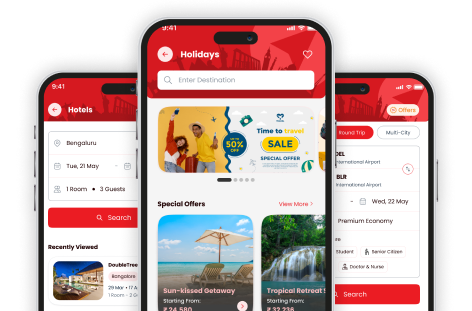Quick Facts
Area: 5382 sq miles (13,940 sq km)
Population: 294,982
Capital City: Nassau (pop 190,000)
People: African descent (85%), European descent (12%), Asian & Hispanic (3%)
Language: English
Religion: Baptist (32%), Anglican (20%), Roman Catholic (19%)
Government: Independent state within the British Commonwealth
Governor General: Arthur Foulkes
Prime Minister: Hubert Alexander Ingraham
GDP: US$5.58 billion
GDP per head: US$20,000
Inflation: 1.3%
Major Industries: Tourism, finance
Major trading partners: USA, UK, Denmark, Italy, Japan, Switzerland
Country Facts
Events:
January: Junkanoo, the nation’s most famous festival.
May: The week-long Caribbean Music Fest.
Currency:
Bahamian dollar (B$)
The US dollar is widely accepted. Other currencies are usually given the cold shoulder treatment. Major credit cards are accepted throughout the islands. There are ATMs in leading tourist centers. Tipping is expected; the generally accepted rule in restaurants is 10% to 15%.
Beaten Track:
Long Island
The most scenic in The Bahamas, Long Island is the place where Atlantic rollers crash against the cliffs. At the northern tip is Cape Santa Maria, where the western shore is one long white-sand beach shelving into turquoise shallows. The island’s main base is Stella Maris, the setting for acclaimed scuba diving and sport fishing. There’s a spectacular beach at McKann’s Bay on the western coast. In the center of the island is the commercial hub of Salt Pond. IT is home to the beautiful St Joseph’s Anglican Church. Around 24 km south of Salt Pond is Deadman’s Cay, where history buffs can poke around the ruins of an old plantation.
Andros
Andros is covered with vast swathes of palm savannas, eerie forests of mahogany, pine and palmettos and huge mangrove wetlands. The eastern shore has few outposts of civilization. People come to dive the world’s third-longest barrier reef. Birdwatchers and beach bums are also frequent visitors. There is a dilapidated lighthouse, and Somerset Beach, a brilliant sight at low tide.
History:
The Lucayans were the original inhabitants of the Bahamas. This tribe of the Arawak Indian group arrived near the turn of the 9th century. The peaceful Lucayans lived primarily off the sea, fishing and harvesting shellfish, conch, lobster and mollusks.
In 1495, Spanish colonialists established the first settlement in the archipelago, serving as a terminus for Lucayan Indians enslaved by the Spaniards for shipment to Hispaniola. Within 25 years, the entire Lucayan population of 50,000 was gone. Eventually, the Spanish abandoned the settlement.
In 1513 the Spaniard Juan Ponce de Leon sailed through the archipelago searching for the fabled Fountain of Youth. Instead he ran into the fast-moving Gulf Stream, which whisked him to Florida and his ‘discovery’ of North America. Soon Spanish galleons were passing by the reef-encrusted Bahamas laden with treasure, from the empires of Central and South America, bound for Spain.
Many foundered, and the waters of the archipelago were littered with wrecks. Tales of treasure lured pirates, and they used the Bahamian islands as hideaways and bases. For the most part, the islands remained unsettled and unclaimed until over a century later, when King Charles I of England granted them to his attorney general.
The English Civil War infected the colonies with religious persecution, and the Puritans of Bermuda were forced to move on. In 1648 some set sail to found a colony of tolerance, and so it was that the Company of Adventurers for the Plantation of the Islands of Eleuthera arrived at today’s Abacos. Political rivalries forced a split, and the majority continued south to the island then known as Cigatoo (now Eleuthera), where the ship ran aground and sank. A few survivors set out by rowboat to enlist support and made it to Jamestown, Virginia, whose residents sent provisions to the marooned, who then founded the first independent republic in the New World.
Also during the 17th century, the British Crown sponsored privateers to patrol the waters in and around The Bahamas, enhancing the careers of scores of pirates and making the main settlement of Charles Town buccaneer central. After the town was destroyed by a joint French and Spanish fleet in 1703, the pirates proclaimed a ‘Privateer’s Republic’ without laws or government and Edward Teach – better known as Blackbeard – made himself their magistrate. This state of affairs lasted until 1714, when Britain signed the Treaty of Utrecht, which removed royal patronage and made the pirates outlaws.
For the next century, pirates plundered ships of all nations and raided towns and plantations both in the Caribbean and the Carolinas. The crown’s appointed governor (himself a former privateer) eventually triumphed over the pirates, proclaiming, in words that became the nation’s motto: Expulsis Piratis – Restituta Commercia (‘Pirates Expelled – Commerce Restored’). With the pirates went the islands’ main source of income, and those who remained had to scrape by through turtle trapping, salt farming and, most importantly, wrecking.
After America’s Revolutionary War, English Loyalists began washing up in The Bahamas by the thousands, tripling the population in three years and introducing two things that would profoundly shape the island’s future: cotton and slaves. They set up plantations modeled on those in the US, but the land was ill suited and most of the farms failed within a few years.
When the Crown outlawed the slave trade in 1807, the Royal Navy began intercepting ships and depositing freed slaves in The Bahamas. Many Loyalists left The Bahamas after emancipation, often bequeathing their lands to their former slaves, who, like the free blacks around them, turned to eking out a meager living from fishing and subsistence farming. Full equality and political rights, however, proved more elusive, for the post-slavery era was marked by the continued rule of an elite minority of whites over an under-represented black majority.
For most of the 19th century, the economy muddled along on subsistence agriculture, fishing, wrecking, smuggling and sponging. But the islands’ ticket out of poverty began to materialize in the US in the form of a new class of people with money to spend on health-inducing vacations in balmy climes. By the turn of the century, Florida was booming as a tourist destination and The Bahamas caught the spin-off. The trickle became a flood in 1920 when Prohibition took effect in the US, resurrecting Nassau’s proclivity for smuggling overnight.
The Bahamas were ideally situated for running illicit liquor into the States aboard speedboats, and the Nassau waterfront soon became a vast rum warehouse. The city poured its profits into construction, and hotels blossomed. The islands’ first casino attracted gamblers and gangsters and a potpourri of the rich and famous, and lesser party animals lured by the prospect of cheap booze. The repeal of Prohibition in 1933 sent Nassau into another economic downturn, this time worsened by the Depression.
As in the USA, however, war spelled the end of the economic slump. WW II rekindled the tourist industry by bringing thousands of American GIs to the islands for R&R. Wealthy Americans and Canadians seeking a sunny winter retreat began returning to The Bahamas, encouraged by the presence of the islands’ new high profile governor and governess, the Duke and Duchess of Windsor. Formerly King Edward VIII of England, the duke gave the islands a new luster, ensuring that the rich and famous would pour into Nassau in the postwar years.
The duke and duchess and their wealthy acquaintances sought to promote tourism as a way of pulling the islands out of the postwar slump, an effort that coincided with the arrival of the jet age and the Cuban Revolution in 1959, which sent Western travelers in search of a new vacation mecca. Concentrating their efforts on Nassau, local leaders expanded the US air base to accommodate international jets, dredged the harbor to lure cruise ships and launched a massive advertising campaign. They also made the country a corporate tax haven, and tourism and finance bloomed together.
The upturn in fortunes coincided with the evolution of party politics and festering ethnic tensions, as the white elite reaped vast profits from the development and tourist boom while the black majority remained impoverished. The black-led Progressive Liberal Party (PLP) took power in 1967, bringing the era of white dominance to an end and paving the way to independence. On 10 July 1973, the islands of the Bahamas officially became a new nation, the Commonwealth of The Bahamas, ending 325 years of British rule.
The PLP’s attempts at reform led to a real-estate slump. Meanwhile, the party’s leadership was mired in corruption – much of it linked to a burgeoning international drug trade. After a US-assisted crackdown on drug trafficking in the 1980s and the election of a pro-business administration in 1992 (returned in a landslide 1997 election), The Bahamas began turning itself around. Unfortunately, in 1999 Hurricane Dennis and Hurricane Floyd walloped the islands, destroying homes, roads, reefs and resorts. By 2001, most of the damage was repaired, and The Bahamas were once again feeling the golden glow of tourism’s attentions.
Culture:
In the Bahamas, a popular ‘folk’ religion is obeah, a system of beliefs governing interactions between the living and the spirit world. The vast majority of Bahamians, however, are Christians. Church affairs make headline news, while major international events are relegated to the inside pages. The country claims the greatest number of churches per capita in the world.
English, the official language is spoken by everyone but a handful of Haitian immigrants, who speak their own Creole. Most black Bahamians speak both standard English and patois. The islands have a vibrant musical culture and have produced several traditional forms of music, including goombay, a synthesis of calypso, soca and English folk songs. Bahamian kids play basketball with a passion.
Environment:
The Bahamas is bordered to the east by the Atlantic Ocean and to the west by the Gulf Stream and is made up of some 700 islands and nearly 2500 small islets or cays. But the islands together add up to no more than 5385 13,940 sq km of land, about the size of the US state of Connecticut. Virtually all the islands are surrounded by coral reefs and sandbanks. The sun shines an average of 320 days a year. In general, the islands are balmy year round, with cooling, near constant trade winds blowing by day from the east.
There are over 1370 species of trees and plants found on the islands. Pine forests rule the northern and western islands. Many of the western shores are fringed by mangroves. The archipelago has only 13 native land mammal species, all but one being bats, all being endangered. The most common is the leaf-nosed bat. The only native terrestrial mammal is the endangered hutia, a cat-sized brown rodent akin to a guinea pig. Wild boar roam the backcountry on some of the larger islands.
Getting There:
The Bahamas has seven international airports, including the two major hubs: Nassau International Airport and Freeport International Airport. It is linked very well by plane from North America. Air Canada flies between Nassau and Toronto and Montreal. British Airways flies directly between London and Nassau or Freeport. From within the Caribbean, Air Jamaica flies between Nassau and Montego Bay. Cubana has flights between Havana and Nassau. The Bahamas is the most popular port-of-call in the Caribbean for cruise ships. The 1200 km archipelago also attracts scores of yachts throughout the year. There are ports of entry on every island.
Getting Around:
Except for Nassau and Freeport, where private minibuses operate, moving around in a bus can be an expensive proposition. Car rental is the best transportation option. Several major international car rental companies have outlets in Nassau and Freeport, along with small local firms. Taxis are the main local transportation in Nassau, Freeport and the Family Islands.
The best way to travel between the islands is by Intra-island flights. Bahamasair has regular services to Grand Bahamas and the larger Out Islands. But be warned: the schedules change frequently and at short notice. There are a few inter-island ferries as well.
When To Go
Weather isn’t a major factor in determining when to go – the Bahamas is a year-round destination. But most visitors like coming in the warm, breezy summer, when the water pleasantly warm. During this season the rainy season extends from May to November and hurricanes are a slim possibility.
Explore Attractions
Nassau
The nation’s capital has a special charm, thanks to its Old World architecture. Tourists converge on the waterfront, a perennial beehive of activity. Parliament Square is surrounded by the country’s major government buildings. Paradise Island, connected to Nassau with a bridge, has great beaches. There are over 300 species of tropical plants at the Royal Victoria Garden. The heart of the shopping district is Bay Street. The Queen’s Staircase, dating from the late 18th century, is also a popular tourist attraction.
Grand Bahama
Gambling, duty-free shopping and beach lounging are the main activities in Grand Bahama. But the island is also known for its few natural `assets’: sugar-white beaches, thick forests of Cuban pine and abundant wildlife. On the western end of the southern shore, Freeport houses the Rand Memorial Nature Center, which boasts excellent horticultural displays and nature trails. It also has the Garden of the Groves, a lush Eden filled with 5000 species of exotic plants and shrubs from around the world. Lucayan National Park is a 40-acre treasure and encompasses the world’s largest known underwater cave system.
Biminis
This is Ernest Hemingway’s ‘islands in the stream’ perch on the edge of the Gulf Stream. The Bimini group is only 26 sq km in area. The main area of activity is Alice Town on Bimini, where hordes of visitors descend in summer to fish, relax, sit around drinking beer, and chat away.
The islands are well known for their good fishing. Scuba divers are lured to the islands’ crystal-clear waters. There’s the Bimini Road off Bimini, alluringly claimed to be part of the ‘lost city’ of Atlantis. The Biminis are also famous for dives with wild dolphins.
Activites
The islands that make up the Bahamas offer some of the best snorkeling and scuba diving spots in the world. Every island is rimmed by coral reefs. The waters offer exceptional visibility and year-round temperatures that make wetsuits unnecessary. There are plentiful ship and plane wrecks to explore – even a train off Eleuthera. Some islanders believe that part of the ‘lost’ city of Atlantis lies just off the Biminis. New Providence offers superb diving and snorkeling close to shore, including such noted sites as the Clifton Wall, off the southwestern coast. Elbow Cay, just off Abaco, has excellent reefs on the Atlantic side. The calmer waters are near Hope Town.
The islands are full with every kind of beach and water activity, including parasailing, water-skiing and windsurfing. Most resort hotels either include water sports in their rates or offer them as extras. The Bahamas is ideal for sailing. Favored areas are the protected waters of the Sea of Abaco and Exuma Sound.
Apart from water-based activities, bird watching is another popular activity. More than two dozen reserves protect more than 230 species. Great Inagua is best for bird watching. The Inagua National Park protects the Western Hemisphere’s largest flock of West Indian flamingo.
Visa
US citizens do not need a passport or visa for stays of less than eight months but must show proof of citizenship. Visas and passports are not required by citizens of Canada or the UK and Commonwealth who stay three weeks or less.
Health risks: Sunburn, prickly heat, dehydration, heat exhaustion, heat stroke, fungal infection, diarrhea, tetanus, jellyfish
Time:Bahamas time is 9 1/2 hrs behind in Summer and in Winter10 1/2 hrs behind India.
Electricity: 110V, 60Hz






